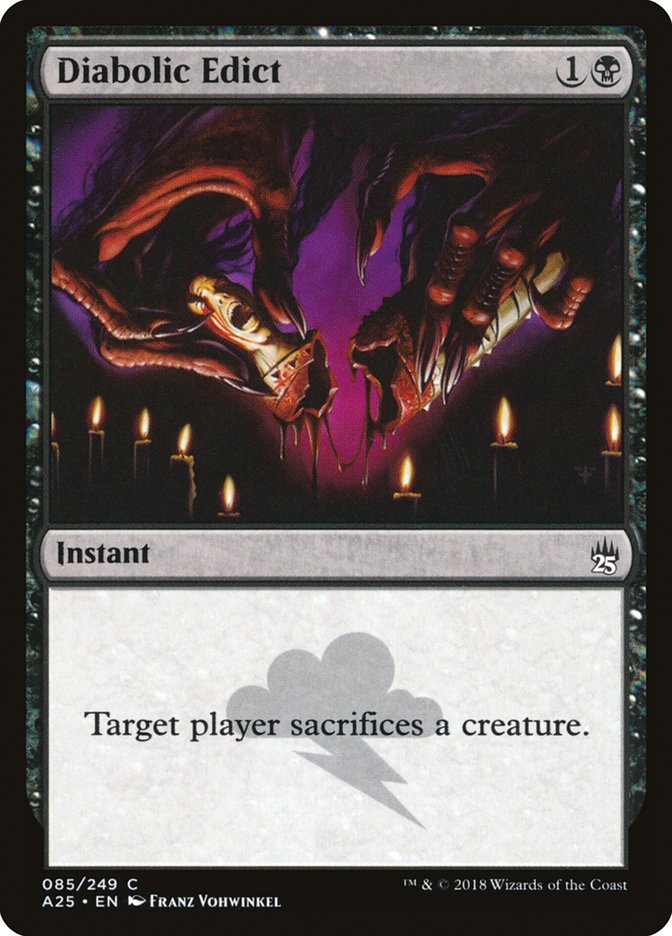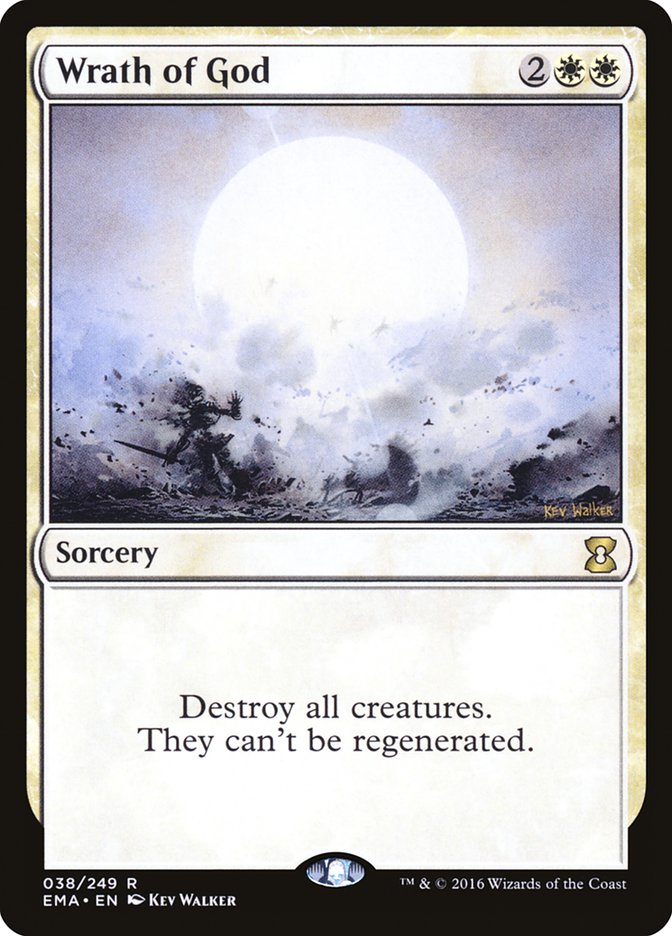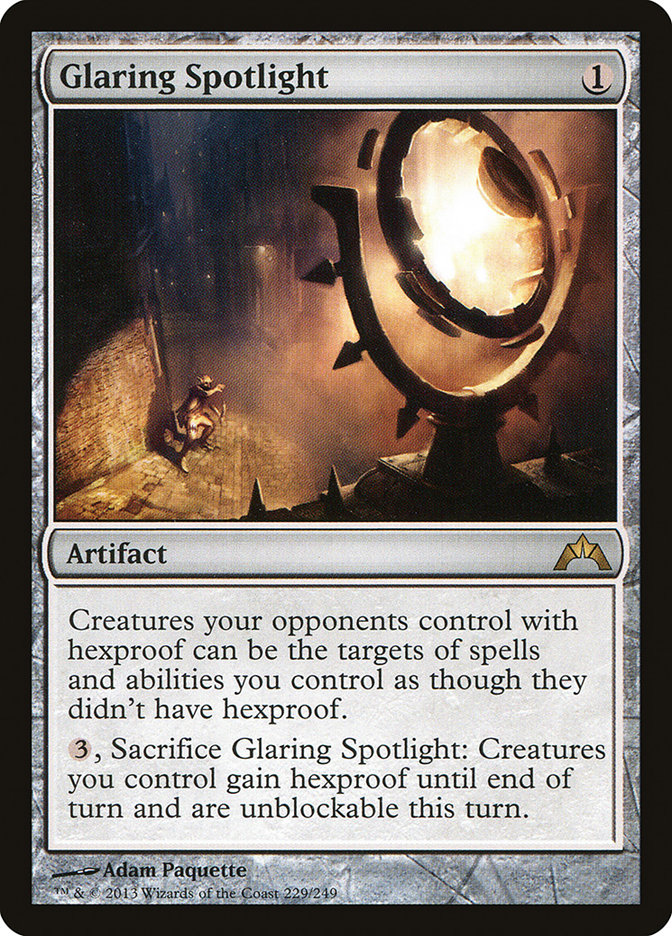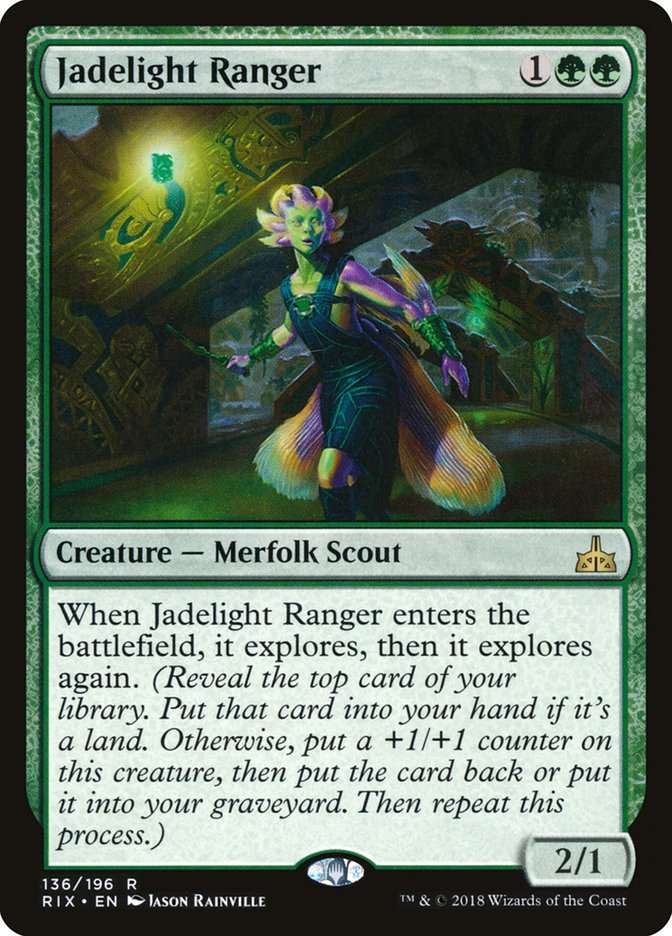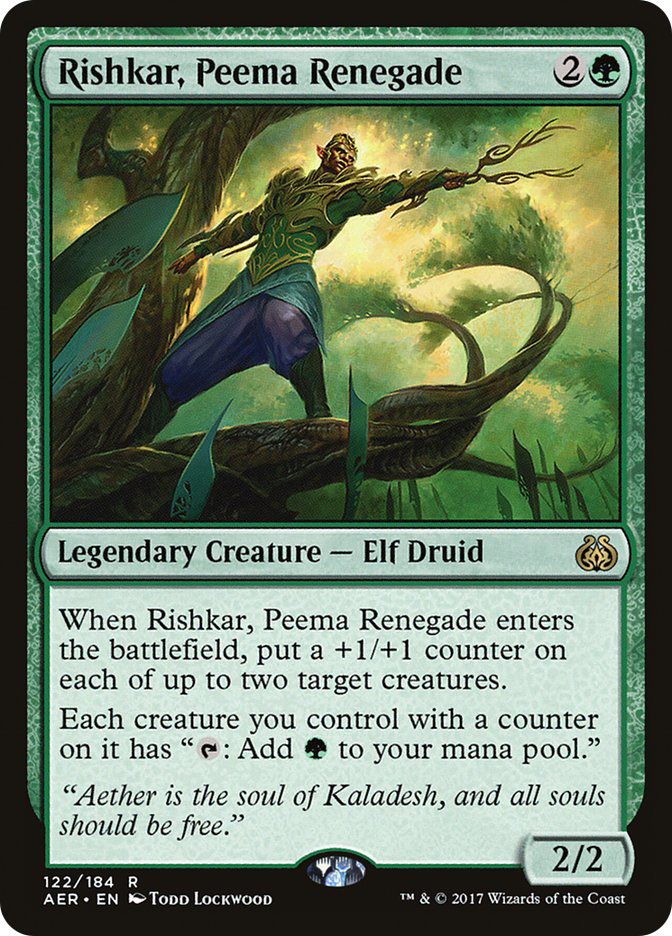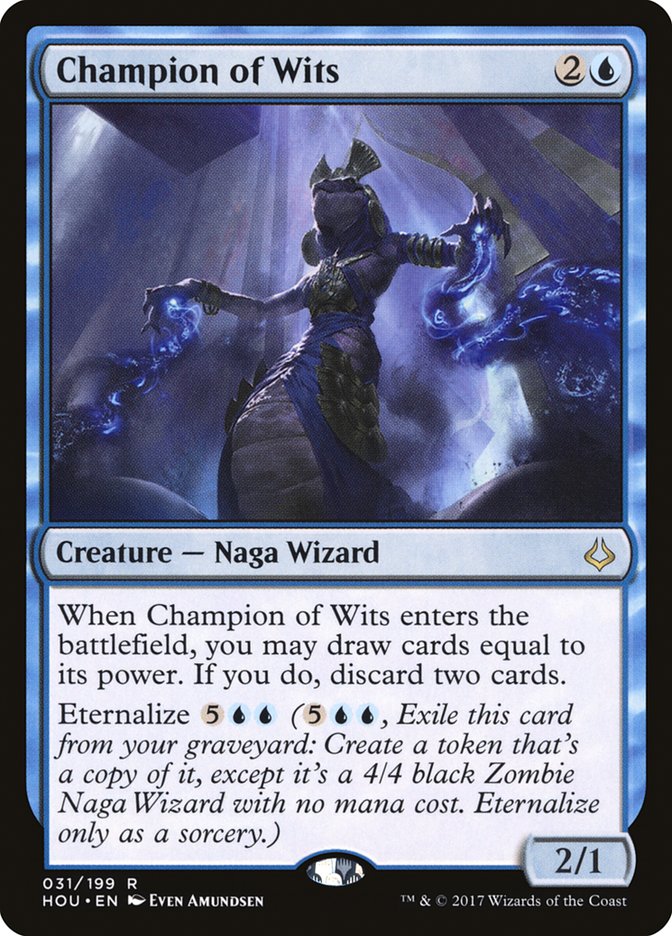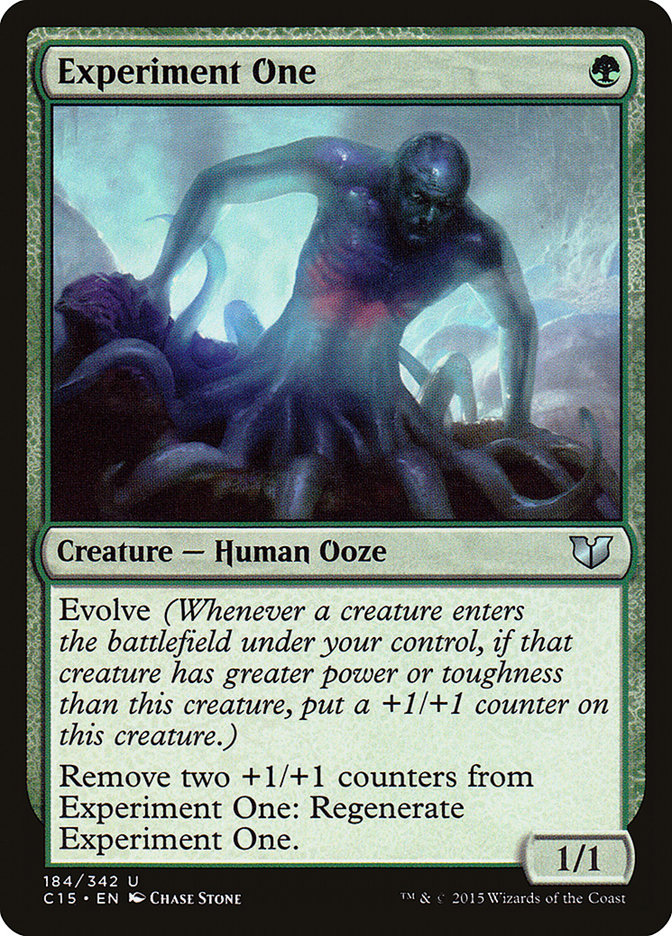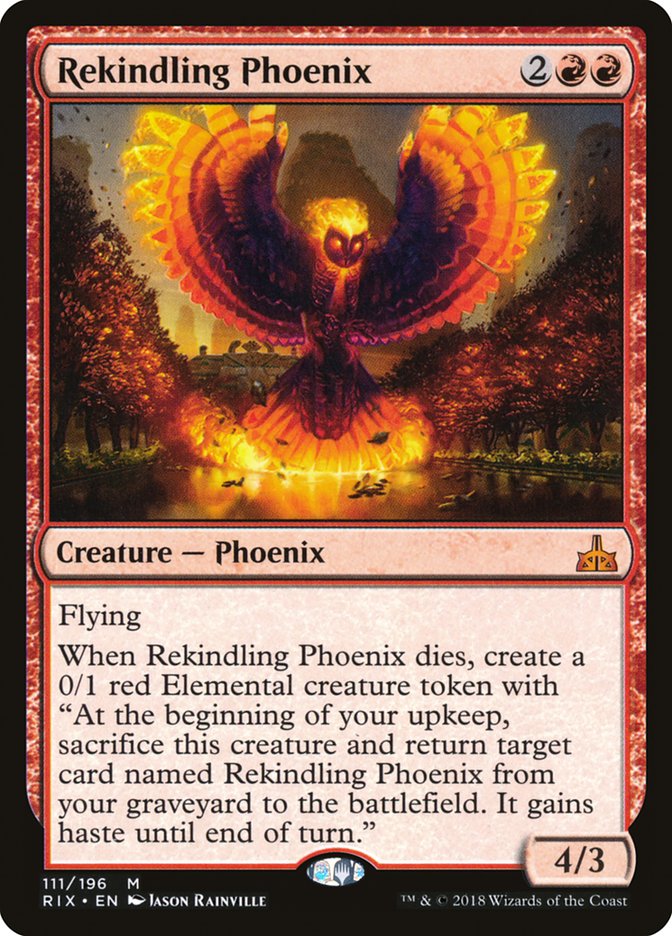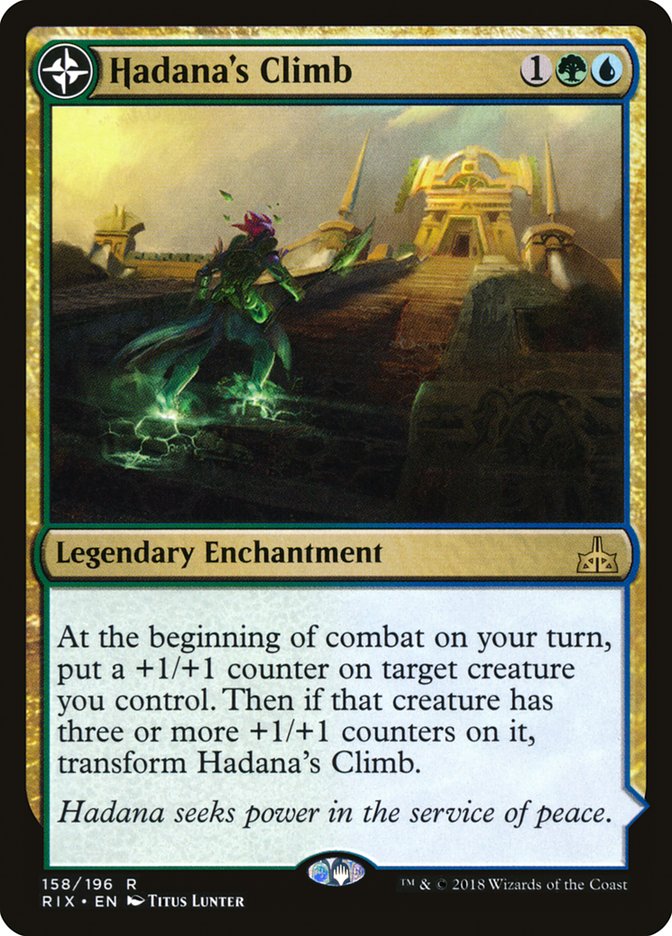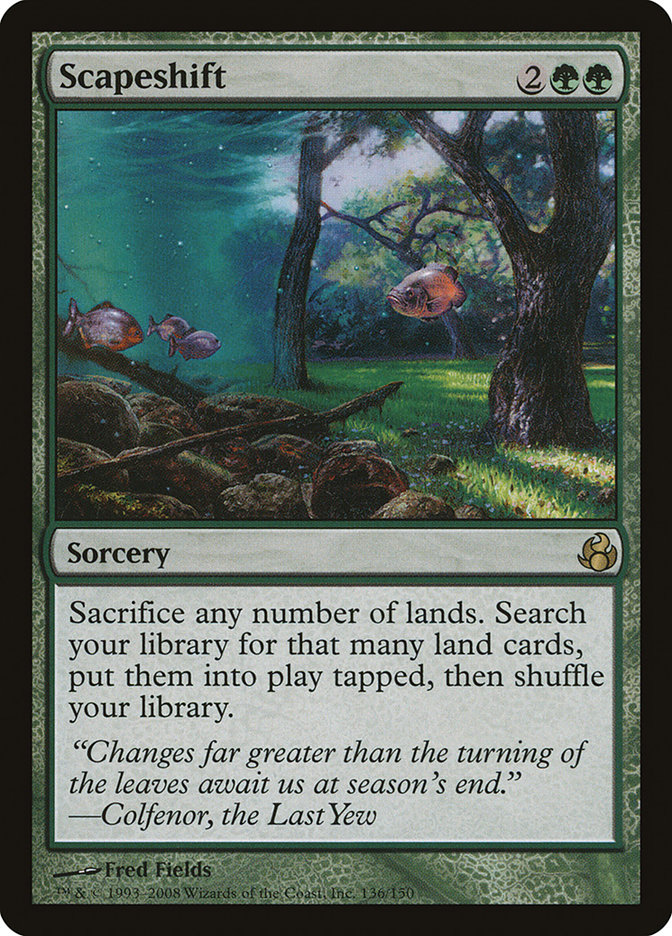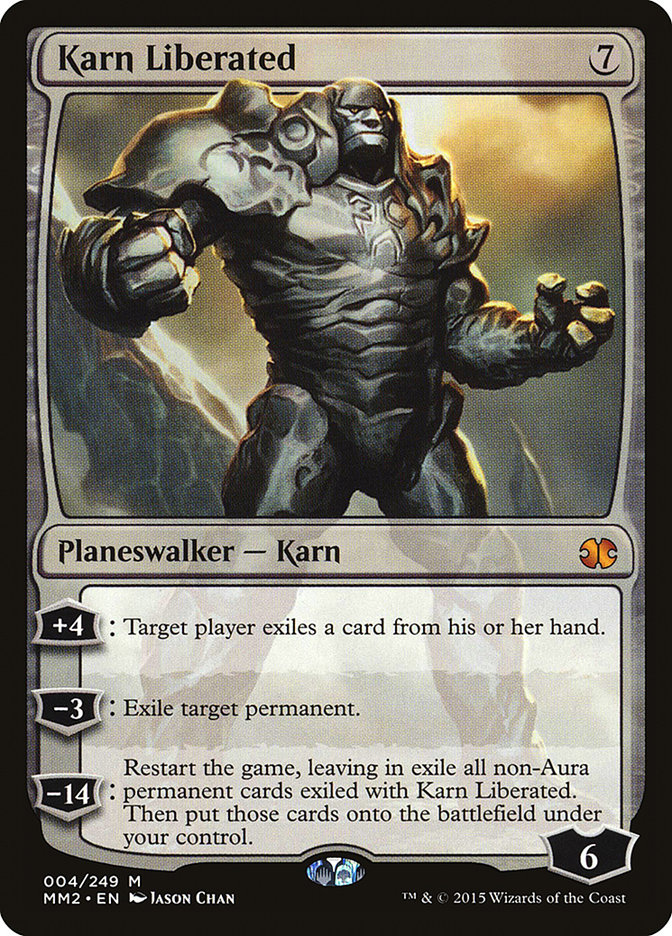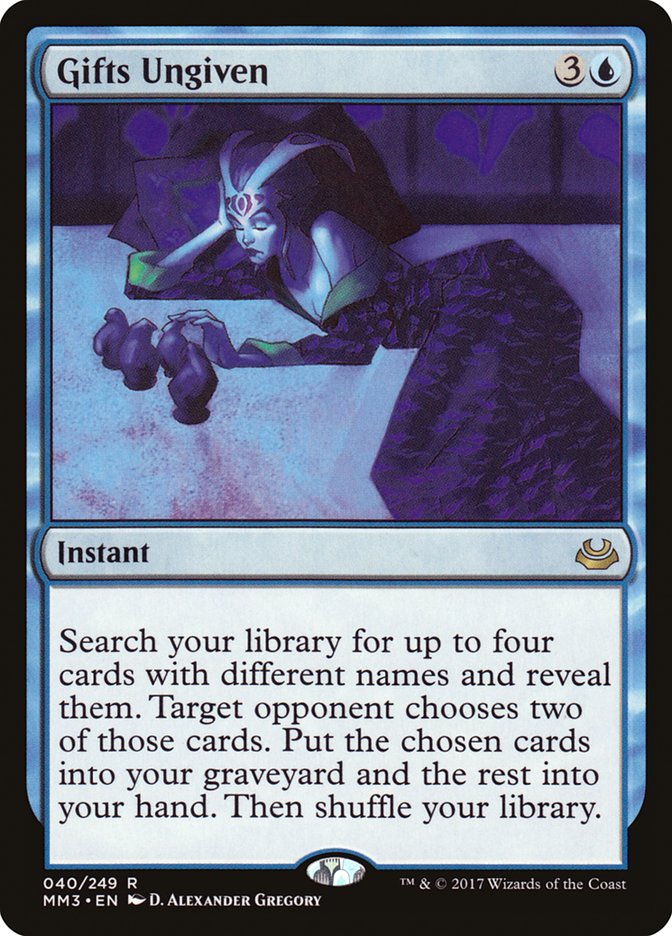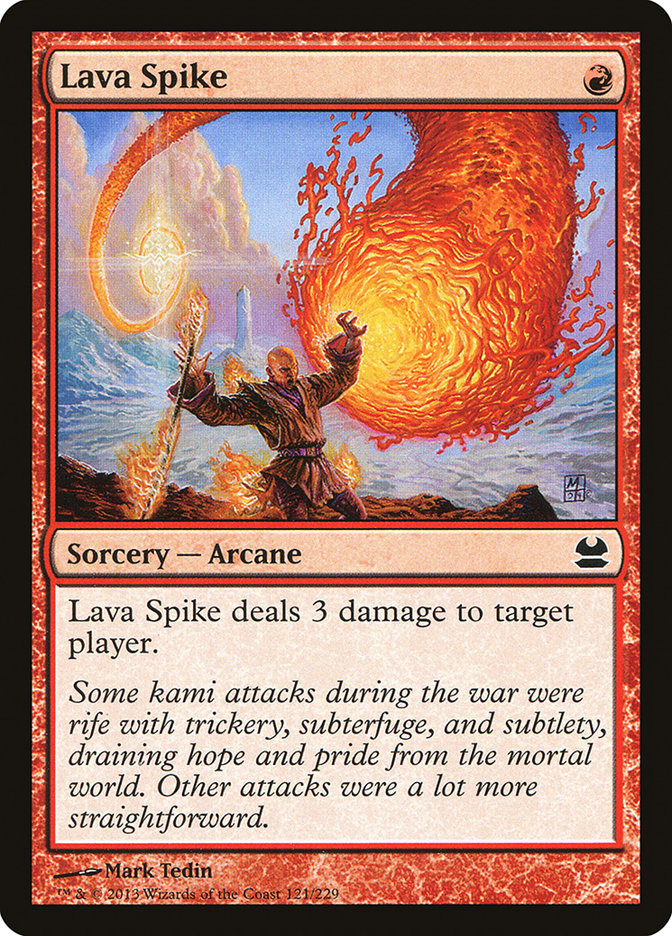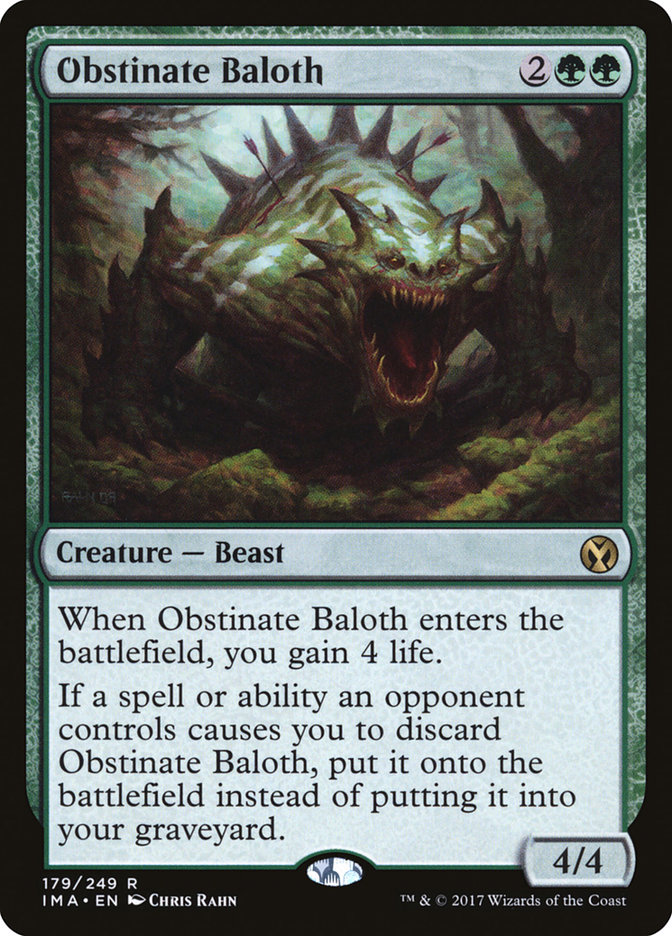We all have our ups and downs with Magic. When I’m at a low point with
Magic, I tend to feel like the time I spend on it is akin to doing
grade-school Math homework. Just a seemingly endless array of dull problems
to work through. When I’m at a high point, I remember that I did get my
Bachelor’s in Mathematics and do actually enjoy the problems in front of
me.
In truth, competitive Magic does bear a lot of resemblance to a math
assignment. You’re constantly being presented with problems that you need
to find an answer to. Some of those problems, like what deck to play at an
upcoming tournament, are open-ended and have many possible valid solutions.
Others, like what block lets you live for another turn, have only one right
answer. Sometimes, it feels like there’s no right answer.
But that’s not a bad thing. I wouldn’t have majored in Math if I didn’t
find working through its problems enjoyable, and you wouldn’t play Magic if
you found its problems mind-numbing. There’s a world of difference between
the dreaded math worksheets of elementary school and the challenging
questions that fascinate mathematicians, and that difference is largely due
to how high-level math problems can be competently approached from a vast
number of different angles.
The same is true of Magic.
The first article I ever wrote for StarCityGames was called
Why Do You Play Magic?
In it, I outlined some of the many aspects of competitive Magic that people
are drawn to. Whether it’s brewing new decks, improving old ones, selecting
the perfect deck for the moment or just figuring out how to play the cards
in front of you perfectly, we all have a part of the game that calls to us
more loudly than the rest.
Problem-Solving Player Profiles
When confronted with a new problem in Magic, it’s only natural that we
immediately attack using the tools that are the most comfortable in our
hands. I fancy myself a play specialist, so whenever I hit a new Magic snag
I immediately start thinking about how I can change the timings of my
spells to fix that problem. Others will run straight to a Magic card
database and start searching for cards they can play that will do the
trick. And some will start playing another deck entirely, neatly
side-stepping the problem entirely.
You’ve heard of Timmy, Johnny, and Spike. Now, it’s time to meet the Tuner,
the Metagamer, and the Player.
The Tuner’s big trick is always having the perfect card. When they start
losing to hexproof creatures, they immediately start looking at ways to
incorporate cards like Wrath of God or Diabolic Edict into their 75. They
always put the onus on their own deck registration sheet to deliver a
solution and refuse to believe that there’s any problem that changing a
card or two can’t solve.
The strength of the Tuner style of problem-solving is the belief that
anything is fixable. The Tuner is always on a quest for the perfect 75, and
they aren’t afraid to leave their darlings on the cutting room floor in
order to get there. The weakness of the Tuner style is the tendency to get
so focused on the branches that you lose sight of the trees. Sometimes for
every problem a Tuner solves, two more pop up as a direct result. The Law
of Unintended Consequences is the Tuner’s worst enemy, always lurking in
the shadows.
The Metagamer doesn’t care about having the perfect card. Cards are too
small-time for the Metagamer. No, what the Metagamer seeks is the perfect deck. When they start losing to hexproof creatures, they show up
to the next tournament with some nonsense Glaring Spotlight combo deck.
Solving problems isn’t enough for the Metagamer – they want to crush their problems.
The strength of the Metagamer is the ability to turn problems into answers.
When a Tuner solves a problem, often they go from losing badly in a matchup
to only losing a little. When a Metagamer solves a problem, they create
problems for their opponents. The weakness of the Metagamer is that small
problems can be tricky to handle. The shifts that would work to handle it
are too drastic to be reasonable, so instead the Metagamer does nothing.
The Player tries not to think too hard about cards outside of the 150 that
matter in the match they’re playing. After all, other cards can’t possibly
matter for the next 50 minutes. When they start losing to hexproof
creatures, they go home and playtest the matchup endlessly without changing
a single card. They come back and aggressively mulligan to creature-heavy
hands that effortlessly beat the same decks they lost to last week.
The strength of the Player is that all of their work matters. When they
find a solution to problem A, they can trust that it won’t be invalidated
by the solution to problem B. They never have to pick and choose between
their ideas for improvement; they can implement all of them simultaneously.
The weakness of the Player is a propensity to become content with
situations they should not be happy with. Sometimes they will struggle with
a problem for a while and find a way to play a common matchup that makes it
40-60 rather than 20-80. This will feel like a victory to them, but isn’t
actually good enough.
I have yet to meet a Magic player who is exclusively one of these types,
but I have also yet to meet a Magic player who truly has no bias for the
kind of problem-solving they do. Every problem can be handled by every
style, but each style has its own set of problems that it’s better suited
to handle. Learning to approach problems with the most appropriate style
for the job can be a big level-up as a Magic player.
Jadelight Ranger isn’t pulling her weight.
Now that
Snakes and Ladders
has taken off, I’m getting a lot of messages and people coming up to me at
events wanting to chat a little about the deck. Which, by the way, is
great. If you’re ever so inclined, feel free. But one of the common things
I get asked about is how I feel about Jadelight Ranger in the deck and if I
think there’s something else we could play instead. A lot of people are a
little unimpressed by my namesake, apparently.
This is a common problem in Magic. You pick up a deck that has been seeing
success and that looks interesting to you, and one of the cards in it
consistently underperforms for you. Or maybe you’ve been playing the deck
for a while, and you feel that in recent weeks this particular card has
stopped feeling as effective as it once did. What do you do?
We’ll start with the angle of the Tuner, as I think that’s the most natural
hat to try and put on when confronted with one of your own cards that isn’t
doing what you want it to. After all, you’ve discovered that one of your
cards isn’t up to snuff. Playing something else instead just makes sense.
Generally, the first step in finding a Tuner solution will be to make sure
you understand the role that the card is playing in the deck. The deck is
an established creation, so the card isn’t there by chance. The card you
replace it with has to be able to help the deck do the same things, or
you’ll be changing it more than you intend. Generally, this means replacing
cards with other cards of the same card type that have a similar casting
cost and very similar strategic impact.
Jadelight Ranger checks a few very specific roles in the Snakes and Ladders
deck. She’s a creature, so she can hold +1/+1 counters, which is important
for flipping Hadana’s Climb. More importantly, she can get some +1/+1
counters onto herself without assistance, speeding up your Climb
transformations and giving you additional Winding Constrictor synergies.
Lastly, she gives you very valuable library manipulation in a deck that has
a smattering of cards that are simply better than the rest in every
matchup.
With that background knowledge, there’s two replacement cards that
immediately come to mind.
As creatures with converted mana cost three, both of these ideas satisfy
the curve requirements that the deck has. Of the two, Rishkar, Peema
Renegade is the closer Jadelight Ranger analog. It’s also the one that has
started to become somewhat popular.
Creatures (27)
- 2 Verdurous Gearhulk
- 4 Bristling Hydra
- 4 Servant of the Conduit
- 4 Winding Constrictor
- 1 Rishkar, Peema Renegade
- 4 Glint-Sleeve Siphoner
- 4 Walking Ballista
- 1 Carnage Tyrant
- 3 Jadelight Ranger
Lands (24)
Spells (9)

Don’t ever let it be said that my examples aren’t current and up-to-date.
The potential weakness of Jadelight Ranger is a real thing going on in the
wild right now. This trend of playing a Rishkar over the fourth copy of
Jadelight was started by Pat Cox in a Magic Online PTQ a few weeks back and
was continued in Cincinnati by Austin Collins.
Rishkar in that slot is a textbook example of a Tuner solution to this
problem. Rishkar does a lot of the things Jadelight Ranger does: it
generates counters and gives you additional mana. It doesn’t provide the
deck manipulation that Jadelight does, but it’s rare to find a completely
perfect replacement. Also, the whole aesthetic of cutting the fourth copy
of a weak card for a one-of is classic Tuner. Whenever I see a decklist
with a healthy dose of one-ofs throughout, I know a Tuner has been working
on it for a while.
Enough about the Tuner. What does the Player do when confronted by an
established card that isn’t quite good enough?
Simply put, they experiment. They start trying to play the card in
different ways, at different times, to see if there’s an angle to the card
that they hadn’t previously considered. They drop every assumption they
have about the card in question, whether it’s the idea that their
aggressive creature should be played on curve whenever possible or that
their wrath effects should be saved as long as possible for maximum value.
If you were to play around with Jadelight Ranger like this, you would reach
some interesting conclusions. First, the best use of Jadelight Ranger
involves placing any non-land card in the graveyard nearly all the time.
Snakes and Ladders is a deck with a few cards that are much better than all
the others, and if the card on top isn’t the actual best card for the
situation and matchup, it should be deposited into the graveyard.
Second-best need not apply. Next, all other things equal, you want to play
your Jadelight Rangers as late as possible or on the turn before you’ll
miss your first land drop, whichever comes first. By implementing these
strategies, I’ve become very happy with my Jadelight Rangers.
The Metagamer’s take on this problem is an interesting one. Like the Tuner,
they want to change something. Again like the Tuner, they start by
acquiring data and understanding the problem. But instead of looking within
at what the card in question does for their deck like the Tuner, they look
without and seek to understand what it is other decks are doing that makes
the card weak.
In the case of Jadelight Ranger, the problem is largely inconsistency. In
some matchups, like W/B Vampires, her body is largely immaterial. She’s
great when she hits two counters and lets you flip Hadana’s Climb quickly,
but you can’t count on that and she won’t be connecting on the ground. She
doesn’t reliably block against the aggressive decks, and she doesn’t
reliably draw you cards against the control decks. Given the popularity of
Field of Ruins, she doesn’t even reliably help you get to your Hadana’s
Climb against control as they can just force you to shuffle after seeing
it.
Once the Metagamer thinks they have a handle on what’s going on, they have
a couple of different approaches they can take. First, in classic Metagamer
fashion, they can play a different deck. You might think that’s kind of an
overreaction to not liking a single card in the list, and you’re not
entirely wrong. However, the cool thing here is to remember that every
problem you encounter in Magic is actually something you’ve learned in
disguise. You don’t like Jadelight Ranger for a reason. The Metagamer
figures out what that reason is, and then adds that information to their
knowledge pool in determining the perfect deck. If Jadelight is bad because
the battlefields are clogged too often, maybe now’s the right time to be
jamming some Glorybringers and Rekindling Phoenixes.
But the Metagamer does have some less drastic measures they can implement.
Generally, they will retool the deck to reemphasize aspects of the deck
that are strong against their metagame analysis and use the space gained by
cutting the weak card to do so. In this case, I could see a Metagamer
deciding to cut the fourth Jadelight Ranger for a fourth copy of Hadana’s
Climb. If the problem is clogged battlefields and not reliably digging
towards your best cards, why not just play a fourth copy of your best card
that also lets you fly over the battlefield?
Which approach is best? In general when dealing with a card from an
established list that you think is weak, I think it’s important to start
with the Player approach. You need to make sure that you’re not missing
something, that there isn’t a way to play the card that solves your issues.
If you’re still unhappy after exhausting your play-based options, where to
go from there depends on the nature of the card. When the card plays a
support role in the deck, the Tuner’s approach is excellent, and when the
card plays a starring role, the Metagamer is going to have the best
results.
How do I beat Jund?
Here’s another perennial Magic problem: what can I do to beat this popular
deck that everyone’s playing? I chose Jund here because it’s a deck I know
very well that is also on the rise in Modern right now, but I could just
have easily said U/R Gifts Storm or Tron or any other deck that people have
ever struggled to beat. Hint: that’s all of them.
This is one of the classes of problems in Magic that we are the most
familiar with. I’m not going to spend a lot of time on how each
problem-solving type handles this one, just enough to make sure everyone’s
on the same page. I mostly want to get into when each style is most
appropriate.
This time we’ll start with the Metagamer. After all, having a deck you’re
worried about being able to beat is very much a metagame-level problem. The
level zero Metagamer solution to losing to Jund is to play a deck that has
a good Jund matchup. For instance, Scapeshift or Tron.
But Metagamer’s don’t often stick to level zero. Level one in this case is
going to be playing a deck that is good against the decks that beat up on
Jund, while also having a serviceable Jund matchup. My picks for decks in
this category right now are U/R Gifts Storm and Burn.
I don’t think either of these decks has a phenomenal Jund matchup, but I
also don’t think they mind sitting across from a Jund opponent. At the same
time, they are very happy to be sitting across from nearly any deck that is
trying to prey on Jund. That’s a pretty good place to be.
Tuners can try and beat Jund too. They won’t do anything as drastic as
switching decks, but they don’t necessarily have to. Their first emphasis
will be on cutting cards that are weak to Jund. An easy way to do that is
to make your deck better against Lightning Bolt and trimming back on
unnecessary synergies.
The second thing they will do is come up with innovative sideboard plans.
For many players looking to beat Jund, this means finding cards that are
good at letting them grind against Jund or that invalidate Jund’s cards.
Obstinate Baloth, for instance, is a nightmare to play against as a Jund
player in matchups where you are leaning on Liliana of the Veil. What are
you supposed to do, not plus your Liliana because theymight have Obstinate Baloth in their sideboard and if they do they might have drawn it? That’s a hard to call make without having
seen it with a discard spell previously.
I don’t have a lot to say about the Player’s solution to the Jund problem
because it’s kind of obvious: they sit down and play a lot of games against
Jund. They learn as much as they can about the optimal ways to play the
matchup, and they increase their equity in it to the best of their ability
without changing a thing.
What’s better? Honestly, it depends on the format. The narrower the format,
the better the Metagamer’s approach is. When a deck is a scary prospect in
Standard, you can expect to see it every third round or so. In Modern, a
deck can be the uncontested best deck and you can still go a whole
tournament only playing against it once.
So in Standard, when you pick a deck that is excellent against the scariest
deck, you are giving yourself a lot of points. When you do the same thing
in Modern, your decision might not pay you off a single time. Indeed, it
might do you more harm than good, depending on how your matchups fall.
My general approach to Modern as a whole is to make the smallest changes
possible at all times. I want to keep my decks as good as they can be
against the field, and that means not overreacting to problems. I start
with Player solutions, work my way to Tuner solutions and only then will I
consider a Metagame solution to a problem I’m facing. Let me tell you, I
rarely get that far.
In Standard, the best practice is to do the exact opposite. Use a Metagame
style solution to your biggest problem, then Tune the remaining
medium-sized problems away and figure out the Play that solves your
smallest problems.
Magic has close to 20,000 cards for you to encounter in your time playing,
with more being created all the time. That number is nowhere close
to the number of possible problems that exist for you to encounter while
playing competitive Magic. Solving them is the best kind of headache.


